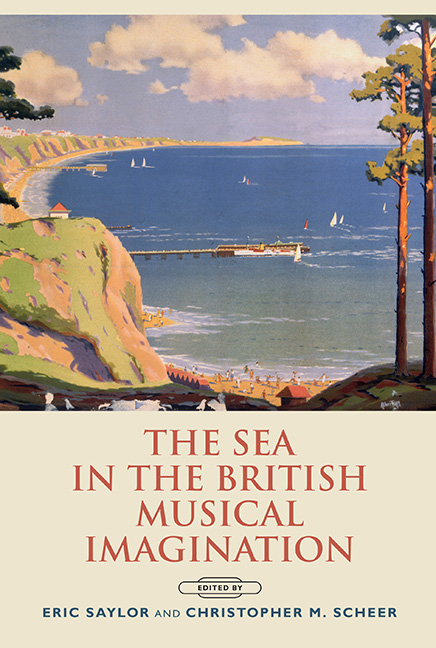39 results
Chapter 30 - Interwar Continental Reception
- from Part VI - Reception
-
-
- Book:
- Vaughan Williams in Context
- Published online:
- 28 March 2024
- Print publication:
- 04 April 2024, pp 259-268
-
- Chapter
- Export citation
The Rapid ASKAP Continuum Survey III: Spectra and Polarisation In Cutouts of Extragalactic Sources (SPICE-RACS) first data release
-
- Journal:
- Publications of the Astronomical Society of Australia / Volume 40 / 2023
- Published online by Cambridge University Press:
- 30 August 2023, e040
-
- Article
-
- You have access
- Open access
- HTML
- Export citation
11 - ‘Es klang so alt und war doch so neu’: Vaughan Williams, Aesthetics and History
-
-
- Book:
- British Musical Criticism and Intellectual Thought, 1850–1950
- Published by:
- Boydell & Brewer
- Published online:
- 17 July 2019
- Print publication:
- 15 June 2018, pp 255-277
-
- Chapter
- Export citation
Index
-
- Book:
- The Sea in the British Musical Imagination
- Published by:
- Boydell & Brewer
- Published online:
- 12 June 2021
- Print publication:
- 17 December 2015, pp 279-288
-
- Chapter
- Export citation
The Sea as Geography
-
- Book:
- The Sea in the British Musical Imagination
- Published by:
- Boydell & Brewer
- Published online:
- 12 June 2021
- Print publication:
- 17 December 2015, pp 9-10
-
- Chapter
- Export citation
11 - Bax’s ‘Sea Symphony’
-
-
- Book:
- The Sea in the British Musical Imagination
- Published by:
- Boydell & Brewer
- Published online:
- 12 June 2021
- Print publication:
- 17 December 2015, pp 225-250
-
- Chapter
- Export citation
Acknowledgements
-
- Book:
- The Sea in the British Musical Imagination
- Published by:
- Boydell & Brewer
- Published online:
- 12 June 2021
- Print publication:
- 17 December 2015, pp xviii-xviii
-
- Chapter
- Export citation
Musical Examples
-
- Book:
- The Sea in the British Musical Imagination
- Published by:
- Boydell & Brewer
- Published online:
- 12 June 2021
- Print publication:
- 17 December 2015, pp xi-xiv
-
- Chapter
- Export citation
Contents
-
- Book:
- The Sea in the British Musical Imagination
- Published by:
- Boydell & Brewer
- Published online:
- 12 June 2021
- Print publication:
- 17 December 2015, pp vii-viii
-
- Chapter
- Export citation
Tables and Illustrations
-
- Book:
- The Sea in the British Musical Imagination
- Published by:
- Boydell & Brewer
- Published online:
- 12 June 2021
- Print publication:
- 17 December 2015, pp ix-x
-
- Chapter
- Export citation
Frontmatter
-
- Book:
- The Sea in the British Musical Imagination
- Published by:
- Boydell & Brewer
- Published online:
- 12 June 2021
- Print publication:
- 17 December 2015, pp i-iv
-
- Chapter
- Export citation

The Sea in the British Musical Imagination
-
- Published by:
- Boydell & Brewer
- Published online:
- 12 June 2021
- Print publication:
- 17 December 2015
Dedication
-
- Book:
- The Sea in the British Musical Imagination
- Published by:
- Boydell & Brewer
- Published online:
- 12 June 2021
- Print publication:
- 17 December 2015, pp v-vi
-
- Chapter
- Export citation
The Sea as Profession
-
- Book:
- The Sea in the British Musical Imagination
- Published by:
- Boydell & Brewer
- Published online:
- 12 June 2021
- Print publication:
- 17 December 2015, pp 81-82
-
- Chapter
- Export citation
The Sea as Metaphor
-
- Book:
- The Sea in the British Musical Imagination
- Published by:
- Boydell & Brewer
- Published online:
- 12 June 2021
- Print publication:
- 17 December 2015, pp 177-178
-
- Chapter
- Export citation
Contributors
-
- Book:
- The Sea in the British Musical Imagination
- Published by:
- Boydell & Brewer
- Published online:
- 12 June 2021
- Print publication:
- 17 December 2015, pp xv-xvii
-
- Chapter
- Export citation
The Cambridge Companion to Vaughan Williams - Half title page
-
- Book:
- The Cambridge Companion to Vaughan Williams
- Published online:
- 05 December 2013
- Print publication:
- 14 November 2013, pp i-0
-
- Chapter
- Export citation
Select bibliography
-
- Book:
- The Cambridge Companion to Vaughan Williams
- Published online:
- 05 December 2013
- Print publication:
- 14 November 2013, pp 321-325
-
- Chapter
- Export citation
Series page
-
- Book:
- The Cambridge Companion to Vaughan Williams
- Published online:
- 05 December 2013
- Print publication:
- 14 November 2013, pp i-ii
-
- Chapter
- Export citation
Part III - Activism, reception and influence
-
- Book:
- The Cambridge Companion to Vaughan Williams
- Published online:
- 05 December 2013
- Print publication:
- 14 November 2013, pp 229-320
-
- Chapter
- Export citation

















